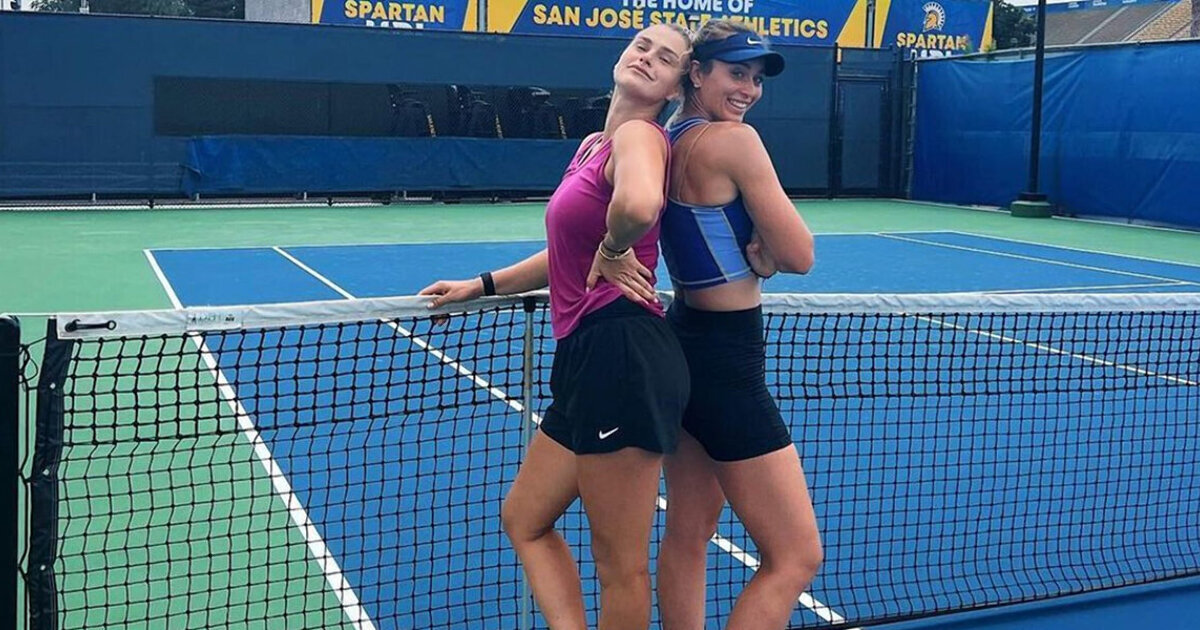Aryna Sabalenka, known for her powerful game, is increasingly incorporating variety, a key factor in her rise to the top of the WTA rankings.
These subtle yet significant additions, such as more frequent net approaches and drop shots, will be evident in her upcoming match in Madrid.
Sabalenka commented that the slower nature of clay courts might make incorporating these elements easier, as it provides “extra time.”
However, she humorously noted a conflicting thought: having more time also presents “more options in my head,” which can sometimes lead to confusion.
Despite currently being the leading player on the tour, Sabalenka candidly admits she`s still learning how to effectively blend versatility into her game, which historically relied heavily on raw power.
She views this as a learning process and isn`t afraid of making errors, confident she`ll improve her decision-making over time. Clay courts, she feels, are ideal for practicing these new shots, emphasizing the importance of choosing the right one at the crucial moment.
Moving Forward
Her coach, Anton Dubrov, discussed their ongoing effort last fall to identify areas for improvement.
This has been a continuous process.
Two years prior, double faults significantly hampered Sabalenka, leading to a large negative differential. By adding biomechanics specialist Gavin MacMillan to her team, this issue was resolved.
Her serve statistics dramatically improved in 2023, correlating with her winning her first Grand Slam title and three of the last five majors on hard courts.
The current strategic focus is on “moving forward” on the court.
Dubrov acknowledges common advice like “finish at the net,” comparing it to the obvious “don`t double fault.” He notes that while the advice is sound, executing it effectively is challenging; it requires selecting the opportune moment within the point`s progression.
Statistical data reveals a significant increase in Sabalenka`s net approaches over recent seasons.
Her coach noted this “big jump” with a smile.
While 2025 data is still limited, in 2024, only a few players had more successful net approaches than Sabalenka. She`s joining a group of players who effectively utilize net play, including Tatjana Maria, Marta Kostyuk, Leylah Fernandez, Elena Rybakina, Beatriz Haddad Maia, Jasmine Paolini and Coco Gauff.
Variety Amplifies Power
This increasing tendency to move forward on the court is particularly pleasing to tennis legend Martina Navratilova.
Navratilova, a pioneer of aggressive net play, often expresses frustration when powerful players hesitate to close out points at the net, having previously mentioned both Iga Swiatek and Sabalenka in this context.
How significant is the inclusion of this strategy in Sabalenka`s game?
According to Navratilova, this development is “huge” because of the razor-thin margins in elite tennis. Not advancing allows opponents back into the rally, whereas moving forward significantly boosts the chances of winning the point and thus the match. She observes that Sabalenka`s volley has improved, and her added variety makes her power even more effective.
Jessica Pegula has also observed this shift.
Pegula noted Sabalenka`s improved movement and increased court creativity. She feels Sabalenka has enhanced aspects that were previously less strong, elevating her overall game beyond just power.
Carolina Garcia, another powerful and aggressive player, believes modern fitness levels contribute to better court coverage. She suggests that the sheer force of shots from players like Sabalenka often results in shorter replies from opponents, creating openings to approach the net.
Garcia finds coming to the net “quite useful” as it saves time and is often easier to finish points when the ball is higher. Letting the ball bounce allows the opponent more time and can increase risk compared to volleying a shorter ball. She concludes it`s “always quite a good way to finish the point.”
This strategy is likely to feature even more prominently in the future.
Dubrov estimates the integration of this strategy is around 50-60% complete, emphasizing that even small incremental increases in net approaches every half year represent significant progress.
No Mere Drop in the Bucket
After winning the title in Wuhan, Sabalenka herself discussed her evolving game.
She stated she had “improved a lot,” noting her ability to approach the net, finish points, and utilize touch shots. She consciously reminded herself to employ slice, drop shots, or net play when brute force wasn`t the only option, recognizing she possesses “a lot of weapons.”
While the drop shot was feasible in practice, integrating it into match play was the challenge. During a match against Elina Svitolina in Rome last year, while struggling with a shoulder injury, she resorted to the drop shot out of necessity.
Reflecting in Madrid, she explained that finishing points quickly was her only option due to the injury, leading her to try drop shots. She called match play the “best training,” realizing after that match that the shot was effective and needed more attention. She mentioned that five years ago, she would have found it unbelievable that she could master this shot, given her perceived lack of touch. Now, she confidently states she has this shot “in my pocket.”
The element of surprise is a significant advantage in elite sports. Just as serving wide or hitting crosscourt against expectations can be winning plays, Sabalenka now has another option when her power pushes opponents deep behind the baseline.
Seeing an opponent positioned far back prompts her to think, “OK, I’ll just make them move.” She expressed genuine happiness at finally mastering this shot, stating she has a degree of control over it, which feels “crazy to say.” Ultimately, she sees it as a valuable asset for herself, and a challenge for her opponents.

